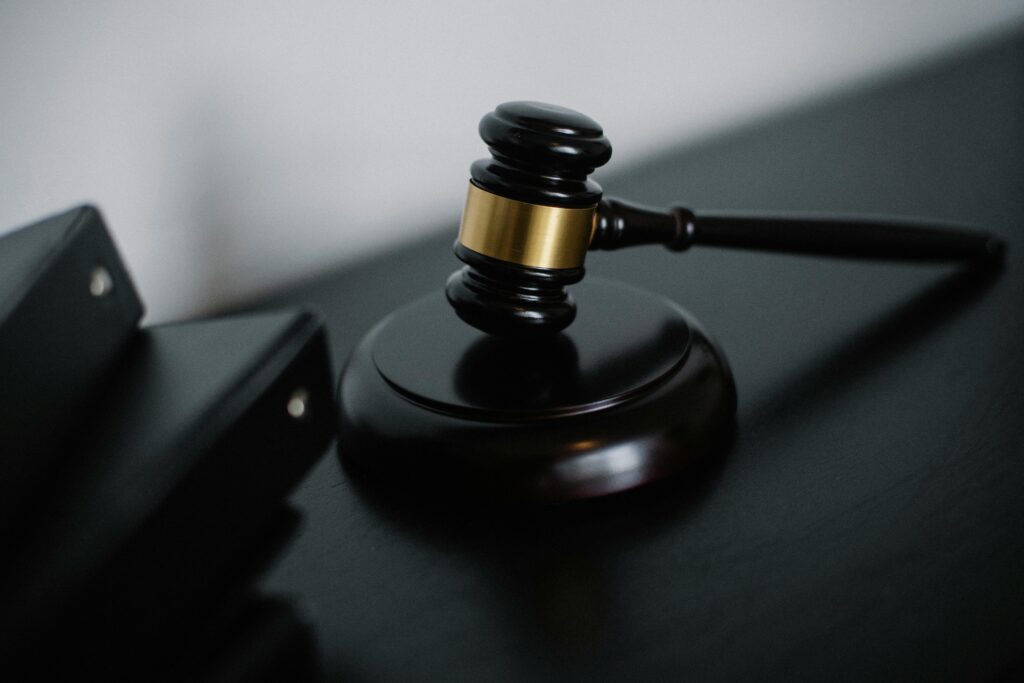Published On: 23rd February, 2024
Authored By: Nishtha Nirula
SVKM’s NMIMS Kirit P Mehta School of Law
I.INTRODUCTION
The Judiciary has been an intrinsic part of India as it is also known as one of the branches of the Indian Constitution, with there being a separation of powers between the three branches of the constitution i.e., the executive, the legislature & the judiciary to make sure there exists a system of checks and balances so that no branch encroaches each other’s areas of authority and they also don’t misuse their power. But to make sure the system of checks and balances prevails judiciary intervenes in each other’s areas of authority by taking an activist’s approach as the monopoly of the governing body in law-making is recognized by the judiciary when it analyzes the administrative goal in deciphering statutes[1], this is known as is Judicial Activism. However, when there is a usurpation of power by the judiciary in areas where they are not supposed to intervene, it is termed as Judicial Overreach.
In the past years, the Court significantly extended its part in the domain of freedoms and administration, affirming the ability to discredit protected revisions under the basic structure doctrine, control legal arrangements, and oversee in the space of ecological approach, observing and researching government debasement, and advancing appointive straightforwardness and responsibility. In a progression of fights with the Indira Gandhi Congress government during the 1970s, the Court stated and settled on the ability to discredit sacred corrections that disregard the essential structure doctrine and keep the finish of Emergency rule[2]. During the last part of the 1970s and mid-1980s, under the authority of Justices P.N. Bhagwati, V.R. Krishna Iyer, and other politically motivated justices, the Court changed its job in administration through new activism supporting the reasons for civil rights and common freedoms for poor people and persecuted classes of India. 18 In a progression of choices, the Court rethought Article 32 of the Indian Constitution to extend the standing convention for PIL claims against government illicitness and administration disappointments. These choices prompted a huge convergence of PIL claims during the 1980s. Reacting to these procedural developments and changes, public interest legal counselors, NGOs, columnists, and basic liberties advocates started to record PIL suits to cure common freedoms infringement and administration disappointments[3]. Time and again the legislation that did not follow the constitutional mandate to make sure no person was shunned away from their constitutional and legal rights. In the article, the author has tried to address the true understanding of judicial activism and judicial overreach by taking into account some landmark judgments that still play an indispensable role for the citizens of India.
What is Judicial Activism & Judicial Overreach? Judicial Activism
The term ‘Judicial Activism’ was first authored by Arthur Schlesinger in an article originally distributed in the Fortune magazine in 1947. Judicial activism in overall terms is the course of judicial decision-making dependent on close-to-home social or political belief systems. It for the most part includes legal cooperation in a law-production cycle or matters identifying with policy issues[4].
The Constitution of India accommodates judicial review under Articles 32 (Supreme Court) and 226 (High Court). The Supreme Court has articulated that judicial review is a major element of the Constitution. The force of legal survey by courts, consequently, isn’t dependent upon alteration and consequently has been viably removed from the field of Parliament’s ability to alter or in any capacity compress. The judiciary has pronounced a “hands-off ” order to the legislature. In our established plan the legal executive alone has been dependent on the power and obligation to test the sacred legitimacy of administrative arrangements and the legitimacy of managerial activities. The predominant courts are engaged to announce a rule ultra vires the constitution and also to invalidate a leader’s activity as unlawful. These powers of judicial review are given not to make the legal executive a preeminent body better than the other wings of the established structure, however, to guarantee an arrangement of governing rules between the law-making body and the leader on one hand and the judiciary on the other. The component has been concocted to work in such a manner that the unconstitutional activities of one of the wings are checked by the other, as well as the other way around[5].
The choice in Minerva Mills Ltd. vs Union of India[6] cleared the way for the tenet of judicial review to be perceived as a fundamental component of the Constitution, along these lines accounting for the legal executive to complete its undertaking of ‘balanced governance, in conjunction with the arrangement of separation of powers. In any case, it’s not simply this choice, the principle of checks and balances is intrinsically present in the Indian Constitution and the standard of separation of powers has never been polished in India in Its strictest sense. Hence, the judiciary has the position to review the constitutionality of any authoritative or regulatory activity[7].
The development of the judiciary’s part in the administrative area lately might, at some level, be ascribed to the hostility of the Indian public. Numerous Indians have become doubtful of Parliament and view the establishment as regularly relinquishing its administration work. Subsequently, they take their complaints to the courts. Judicial Activism transformed the legislative authority by filling gaps in areas that legislation could not address. The late 1970s saw a drastic change in the approach of the judiciary resulting in landmark judgements that saved the rights of citizens. On account of the Keshavanada Bharathi (1973) case, the Supreme Court held interestingly that a constitutional amendment appropriately passed by the assembly was invalid for harming or annihilating its basic structure. This was a monstrous legal jump obscure to an overall set of laws. The incomparability and permanency of the Constitution were guaranteed by this declaration, with the outcome that the essential elements of the Constitution are presently past the span of Parliament[8]. In the Vishaka matter, it can be said that the rules set down in the critical instance of Vishaka vs State of Rajasthan[9] concerning the security of working ladies from sexual viciousness in working environments, without a doubt comprise an adjudicator-made law. In the right now the case, the Supreme Court felt that it was an officeholder to at minimum issue rules for shielding essential freedoms of female laborers ensured under Articles 14,19, and 21 of the Constitution, particularly at the point when an enactment is missing regarding this matter. The Protection of Women against Sexual Harassment at Workplace Bill was drawn up dependent on these rules given in 1997, and on November 4, 2010, the focal bureau invited the presence of the said Bill in Parliament[10].
The Indian Judiciary has always believed in taking the liberty to address nuances in our society and it came up with Public Interest Litigation (PIL). In 1975, Justice V.R. Krishna Iyer interestingly in the Bar Council of India case23, upheld the liberal understanding of locus standi out in the open interest case. From that point, the idea of public interest litigation took a more clear shape through the astounding judgment, in what is famously known as the instance of the ‘judges’ move’. Equity Bhagwati saw that there is an earnest need to enhance new techniques also devise new procedures to give admittance to equity to the huge masses of individuals who are denied their basic freedoms and to whom opportunity and freedom have no importance[11]. The idea of taking liberty and opening gates for people to the judiciary is certainly a notion of unconstitutionality of legislation passed by Parliament, to which the power of doing so is bestowed by the Indian Constitution. However, decisions by the Judiciary attract criticism besides that it must be noted that the judiciary steps up only when comes unconstitutional legislation into the picture which does not mean the Judiciary is a despotic pillar of the Constitution.
Judicial Overreach
Judicial Overreach is the usurpation of the powers and authority of the executive and legislature by the Judiciary, not following the separation of powers mentioned in the Constitution.
The Supreme Court of India with time has evolved from the conservative approach of Judicial Activism and widened its scope with interference in the legislation, the Supreme Court practices judicial restraint and is well aware of its powers given by the constitution. In the case of P Ramachandran Rao vs the State of Karnataka[12], stated
“The Supreme Court does not consider itself to be an imperium in Imperio or would function as a despotic branch of the State.”
However, there exists no stringent separation of powers between the executive, legislature, and judiciary. But the courts try to practice judicial restraint. The Supreme Court of India took all this into account in the judgment reported in the case of State of Kerala vs A Lakshmi Kutty[13], stating that
“Special responsibility devolves upon the judges to avoid an over-activist approach and to ensure that they do not trespass within the spheres earmarked for the other two branches of the State.”
The judges ought not to enter the fields constitutionally reserved for the law-making body and the executives. Judges can’t be officials, as they have neither the order of individuals nor the constitutional insight to comprehend the requirements of various segments of society. They are illegal from accepting the job of managers; administrative hardware can’t be controlled by decisions as that isn’t the goal of our constitution producers. While deciphering the arrangements of the constitution the legal executive frequently reworks them without unequivocally expressing so. Because of this cycle, a portion of the private beliefs of the adjudicators solidifies into legitimate standards and protected qualities[14]. A glaring example of judicial overreach would be, when the Supreme Court, while hearing cases concerning the board of the Covid emergency at a pan-India level, announced Delhi as a “delegate of the whole country” and requested that the Center stock oxygen to it by whatever implies. Without diving into the impromptu remarks made by the courts, it still needs to be perceived as the reason why such an advantage was not distributed to different states[15].
Even though the Judiciary is well aware of its powers and limitations instances of judicial overreach can be seen.
How is Judicial Activism different from Judicial Overreach?
The separation of powers between the executive, legislature, and judiciary is certainly given in the constitution, for the smooth functioning of Indian democracy the judiciary should know the demarcation between ‘judicial activism’ and ‘judicial overreach.
The traces of judicial activism can be traced back to the battle between the judiciary and government over property rights that led to the Golaknath and Keshvanand Bharti cases.
The Golakhnath Case,1964
At issue in Golak Nath was whether the Parliament’s ability to alter the Constitution under Article 368 was limitless. In the Sankari Prasad Case test to the First Amendment, the solicitors contended that the new alteration disregarded Article 13(2), which denied the public authority from passing any “law” that encroached upon the crucial privileges arrangements, and that an alteration was remembered for the meaning of the law. Notwithstanding, the Court dismissed this contention, holding that “there [was] an unmistakable outline between customary law made in exercise of authoritative power, and sacred law made in exercise of constituent power.” Similarly, in Sajjan Singh v. Condition of Rajasthan, the Court mediated a test to the legality of the Seventeenth Amendment. In maintaining the Amendment, the Court reaffirmed its previous choice in Shankari Prasad. The Court in Golak Nath overruled these prior decisions by a 6 to 5 control and decided that Parliament can’t sanction protected changes that abuse the crucial privileges arrangements of the Constitution. Composing for the greater part, Chief Justice K. Subba Rao held that Article 368 didn’t give the ability to change the Constitution, however, may put forward the methodology for change. He proceeded to hold those revisions established under Article 368 were ordinary “laws” under Article 13, and along these lines could be dependent upon legal audit. The Court too decided that it was an option for Parliament to meet another Constituent Gathering for reasons for correcting the Constitution. Finally, in a key move, the Court conjured the tenet of “forthcoming overruling,” which implied that the decision would just apply to future alterations and that the First, Fourth, and Seventeenth Amendments however considered to be unlawful, would stay basically. Even though Golak Nath eventually didn’t discredit the three alterations, the Court in R. C. Cooper
- The Association of India did try to moderate the impact of the Fourth Amendment, which
specified that the ampleness of remuneration in takings would be non-justiciable. In R.C. Cooper, the Court refuted the Bank Nationalization Act passed by Indira Gandhi’s Congress government because the Act gave just fanciful remuneration and established threatening segregation by forcing limitations just on certain banks. The Court proceeded to decide that it could hold that guidelines were not “sensible” under Article 31(2) of the Constitution where those guidelines neglected to give sufficient pay. In one more test to the Gandhi government, the Court in Madhav Rao Scindia v. India nullified the Gandhi government’s endeavors to cancel the titles, advantages, and privy satchels of the previous leaders of the regal states. In light of these decisions, Indira Gandhi broke down the Lok Sabha right on time (without precedent for India’s political history), and straightforwardly crusaded against the Court, promising to roll out essential improvements in the Constitution to accommodate social fairness and neediness alleviation. Following an avalanche win, Gandhi’s administration established three alterations to abrogate the Court’s decisions. It established the Twenty-Fourth Amendment, which tried to overrule Golak Nath by insisting and reasserting Parliament’s limitless ability to revise the Constitution under Article 368, including the essential freedoms arrangements, and announced that such changes were not common “laws” under Article 13, and hence couldn’t be dependent upon legal survey by the Court. The public authority likewise tried to abrogate the R.C. Cooper choice by sanctioning the Twenty-Fifth Amendment, which looked to make remuneration related to land-obtaining laws non-justiciable and tried to give power to the Directive Principles in Article 39 over the Fundamental Rights arrangements in Article 14, Article 19, and Article 31, and specified that laws instituted by the Central and state legislatures to give impact to the Directive Principles couldn’t be tested in Court. At last, the Twenty-Ninth Amendment was authorized to add two Kerala land change laws to the Ninth Schedule[16].
The Kesavananda Bharati case (1973)
In Kesavananda, a thirteen-judge seat of the Court heard a series of difficulties with the twenty-fourth, Twenty-Fifth, and Twenty-Ninth Revisions. In a 1,002-page choice comprising of eleven isolated suppositions, the Court overruled its previous choice in Golak Nath in holding that Parliament could correct the basic freedoms arrangements, yet additionally held that under Article 368, Parliament couldn’t authorize established corrections that adjusted the “essential construction” of the Indian Constitution. The seven-judge larger part maintained the Twenty-four and Twenty-Ninth changes completely, and part of the Twenty-Fifth Amendment. Nonetheless, the Court held that the second segment of the Twenty-Fifth Revision was invalid and disregarded the essential construction of the Constitution, since that part inappropriately assigned the force of alteration to the state councils, and took into account the repeal of the fundamental elements of the Constitution by taking into consideration the public authority to remove the major privileges contained in Articles 14, 19, and 31. As indicated previously, that part had added Article 31 C to the Constitution, which gave that “no law containing a presentation that is the forgiving impact to” the order standards under Articles 39(b) and (c) “will be brought being referred to in any the court on the ground that it” doesn’t give impact to such standards”. The judges offered contrasting perspectives on what may involve the essential construction of the Constitution. Boss Justice Sikri held that the fundamental structure included five highlights: (I) Supremacy of the Constitution, (ii) Republican and vote-based type of government, (iii) Secular person of the Constitution, (iv) Separation of abilities between the council, the chief and the legal executive, (v) Federal person of the Constitution. The above structure is based on the fundamental establishment, for example, the poise and opportunity of the person. This is of incomparable significance. This can’t by any type of change be destroyed. Notwithstanding the previous elements, Justice Shelat accepted that “the solidarity also respectability of the country” and “the command was given to the state in the mandate standards of state strategy” were likewise essential highlights of the Constitution. What was especially striking with regard to the Kesavananda choice was that it addressed a direct political test by the Court to the discretionary order of Gandhi’s Congress system, which had won 350 out of 545 seats in the 1971 races. In its declaration, Gandhi’s Congress party looked for an order “for the reassertion of Parliamentary Supremacy regarding change of essential privileges,” an immediate reference to the Court’s choice in Golak Nath truth be told, in its choice, the Court ventured to such an extreme as to scrutinize the constituent order of the Congress party, taking note of that “[t]wo-thirds of the individuals from the two Houses of Parliament need not address even most individuals in this country. Our constituent framework is with the end goal that even a minority of electors can choose more than 66% of the individuals from one or the other House of Parliament.” The disputable choice didn’t agree with Indira Gandhi, and she continued to supplant the following three senior judges in the Kesavananda greater part by choosing A.N. Beam as the following Chief Justice. As far as its noteworthy significance, most researchers of Indian established law today have perceived and noticed the meaning of this second in India’s political and protected history, however, the prompt response to the choice was more unfriendly[17].
As we can see the Supreme Court by taking an activist approach stood by the constitutional mandates and saved our rights this is a clear example of judicial activism, glaring cases of legal exceed incorporate the police changes case; the fixing of unapproved business tasks; destruction of unapproved developments and the formation of an Observing Committee direct something similar; the judgment of the Supreme Court in SR Bommai v Union of India (1994) setting out that the Presidential Proclamation dissolving a State Legislative Assembly is dependent upon legal audit and that in case the court strikes down the decree, it can reestablish the State Government to office[18]. These are a few examples that distinguish judicial activism and overreach.
SUGGESTIONS
While both Judicial activism and overreach attract criticism, with intellectuals and scholars arguing judicial activism is necessary for the smooth functioning of democracy, it is to be noted that Judicial Activism is not the judiciary taking the role of the legislature but acting in the light of basic structure doctrine. The constitution has three equal branches that have equal separation of powers among the legislature, the executive, and the judiciary these branches of the constitution are obliged to work under the system of checks and balances so that there is no misuse of powers. However, when the judiciary starts to act first among the equal branches judicial overreach takes place. Any attempt by the judiciary to abridge the basic structure doctrine and usurp the powers of the legislature should be condemned and judicial restraint should be followed by the judiciary, the boundaries and limitations are well known and practiced by the judiciary, but it must be the norm to be followed by judges as well they should not put up their personal opinions while practicing judicial activism doing so might result in judicial overreach.
CONCLUSION
“Once it is recognized that the judges do make law, though not in the same manner as the legislature, it will immediately become apparent why judges can and should adopt an activist approach. There is no need for judges to feel shy or apologetic about the law-creating roles.”
– Justice P.N. Bhagwati
The extremist methodology—and likewise, “judicial activism”— recommended by Justice Bhagwati, visualizes changes in the understanding of the established and Statutory arrangements in consonance with the elements and vulnerabilities of human issues and relations. Basically: Courts must “apply” the law that figures out the worldly idea of our existence. Interestingly, in the moderate mind, the standard of activism is the disappointment of the legal executive to decipher the established arrangements also resolutions as per the desire of the initial architects and administrators individually; this is the ticket it was enunciated by Raul Berger, an educator at The University of California at Berkeley and Harvard College School of Law[19]. In judicial overreach, a judicial decision either ‘demonizes or legitimizes’ a choice of the governing body or on the other hand of the chief. Regardless the court neither endorses nor censures any administrative arrangement nor is it worried about its insight or convenience. Its anxiety is only to decide if the enactment is in congruity with or opposite of the arrangement of the Constitution. It frequently incorporates thought of the judiciousness of the statute[20]. With the advent of judicial activism, liberal options were introduced to the citizens of India such as public interest litigation, the creation and development of developmental rights, and being a tool of social engineering.
The judiciary through judicial activism has helped the downtrodden and disadvantaged people to impart justice by abiding by the basic structure doctrine, it is well aware of its limitations and thereby follows the same without being adept to judicial overreach, it is only by practicing judicial restraint ‘judicial activism can achieve its true meaning.
BIBLIOGRAPHY
CASES
- Minerva Mills vs Union of India, 1980
- Vishaka vs State of Rajasthan, 2004
- State of Kerala vs A Lakshmi Kutty, 1986
JOURNALS
- A Jurisprudential analysis of Judicial swing: from activism to overreach, 1 Jurisedge Journal of Juridical Research, 2016.
- From Activism to Restraint: Retrograde Judicial Philosophy or Merely Controverting Judicial Overreach, GNLU Law Review, 2012.
- An Analysis of the Scope of Judicial Overreach in the Context of Legislative Intent, 3 Christ University Law Journal, 2014.
- Manoj Mate, The Rise of Judicial Governance in the Supreme Court of India, 33 Boston University International Law Journal,2015.
PERIODICALS
- R Shunmugasundaram, Judicial activism and overreach in India, 72, Amicus Curie,
ARTICLES
- Dr Justice BS Chauhan, The Legislative Aspect of the Judiciary: Judicial Activism and Judicial Restraint, 2012
NEWSPAPER ARTICLES
- Judicial overreach in times of COVID-19, The Indian Express, Dec. 7. 2021, https://indianexpress.com/article/opinion/judicial-overreach-in-times-of-covid-19-7320256/
[1] Sreyan Chatterjee, An Analysis of the Scope of Judicial Overreach in the Context of Legislative Intent, 3 Christ University Law Journal 31,31 (2014)
[2] Manoj Mate, The Rise of Judicial Governance in the Supreme Court of India, 33 Boston University International Law Journal 169, 171 (2015)
[3] Supra at 2, 175
[4] Pubali Sinha Chowdhary, From Activism to Restraint: Retrograde Judicial Philosophy or Merely Controverting Judicial Overreach, 3, GNLU Law Review, 17, 18(2012)
[5] R Shunmugasundaram, Judicial activism and overreach in India, 72, Amicus Curie, 22, 22 (2007)
[6] See Minerva Mills Ltd. vs Union of India, SCC, 1980, Supreme Court of India, 625
[7] Supra at 4, 24
[8] Supra at 4, 24
[9] See Vishaka vs the State of Rajasthan, SCC, 1997, Supreme Court of India, 241
[10] Ibid 4, 25
[11] Supra at 5, 26
[12] See P Ramachandran Rao vs the State of Karnataka, SCC, 2004, 578
[13] See State of Kerala vs A Lakshmi Kutty, SCC, 1986, 632
[14] Supra at 5, 24
[15] SN Aggarwal, Judicial overreach in times of Covid-19, The Indian Express, Dec. 7. 2021, https://indianexpress.com/article/opinion/judicial-overreach-in-times-of-covid-19-7320256/
[16] Supra at 2, 181-182
[17] Supra at 2, 182-185
[18] Supra at 4, 27
[19] Dr Justice BS Chauhan, The Legislative Aspect of the Judiciary: Judicial Activism and Judicial Restraint, 1, 9, 2012
[20] Soumya Tiwari, A Jurisprudential analysis of Judicial swing: from activism to overreach, Jurisedge Journal of Juridical Research, 1, 3, (2016)




